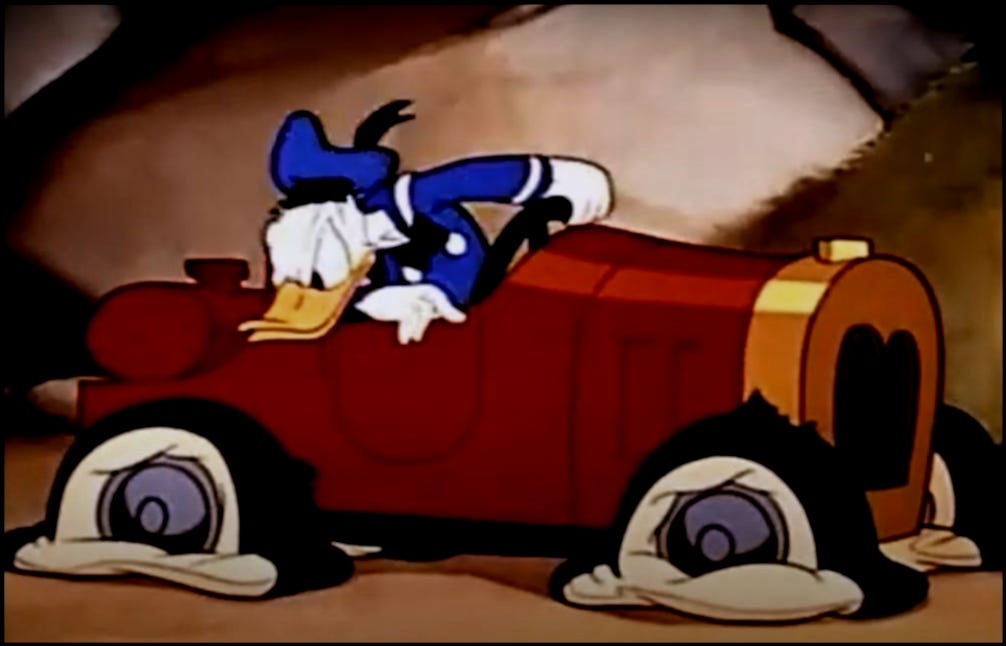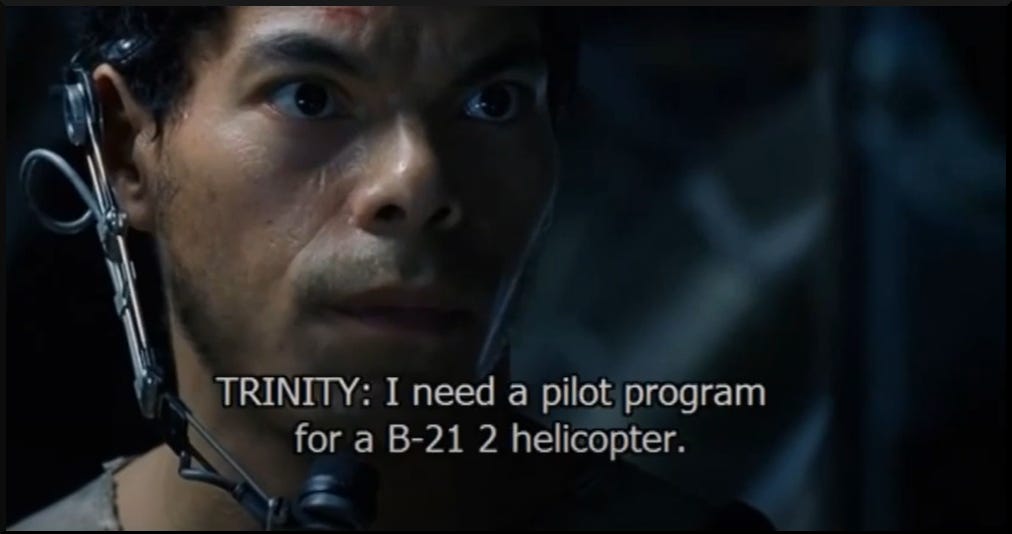Following our look at G.I. Joe’s Clutch, we dive into character tropes. This time, exploring the “the driver”.
Granted, the title this week makes it sound as if I’m presenting a series of writing motivations and prompts… and maybe I am, only about vehicle drivers, specifically.
A driver in fiction is not just able to transport the characters from place to place physically. But by doing so, they’re likewise able to literally move the story as well, taking it into new locations and helping advance (and complicate) the plotline:
Han Solo. Furiosa. Jet from Cowboy Bebop. I find it amusing, and gratifying, that most of the entries listed in Wikipedia’s fictional drivers are from G.I. Joe.
Let me start with my own connection to vehicles. It’s never been great. Our family grew up with a series of shit-boxes whose only function in getting from Point A to Point B was very often beyond them. There’s family lore about the time we finally drove to a tire store just as all four of our tires gave up their final tread and flattened right there in the parking lot.1

In another piece of family lore, my parents broke down on the side of a highway late one night back in the ‘70s, convinced that a car pulling up behind them was there to rob them (in a scene I somehow picture somewhere between Taxi Driver and The Warriors). Not a second later, a police car also pulls up to see what’s going on, causing the other car to peel away. Not only were my parents convinced they were saved by the police, but also in the power of prayer.
As for my own driving experience, I inherited the remnants of whatever cars my parents passed along to me—which was certainly a boon, as it meant I had my own car as a teenager. (Don’t get me wrong, I was definitely an ungrateful little shit at the time.) But it also meant dealing with the peculiarities of each one (the monkey paw curls…). One Honda Civic2 had a tendency to overheat after a certain mile point, so there was always a delicate balance of trying to keep the speed down while also trying to hurry home before it failed me completely.
So with drivers, there’s plenty to explore in that relationship. A driver needs to understand their vehicle—both its strengths and vulnerabilities. They need to learn its maintenance. And, they need to have a special name for it, in order to better curse at it while its gauges all start going haywire.
Some other considerations, as far as the trope of drivers:
Finding a Driver
If vehicles can be driven by anyone, this removes the need for a specific driver and thereby also decreases the dramatic tension. Remember, we want to introduce as many obstacles as possible for our protagonists to overcome. When it comes to transportation, this can include requiring a certain vehicle to make the journey, andf thus needing a driver trained to operate that vehicle.
Which opens up a world of character possibilities…
In Star Wars, Luke may not be “such a bad pilot myself,” but if he could already fly a transport ship, then our heroes would never need to enter Mos Eisley to recruit one. They need both a ship and a pilot, and one with the skills to smuggle them past Imperial search parties.
The necessity of their circumstances allows for a completely new style of character to join their party. Luke and Ben are both morally upright, but when all available pilots are sketchy at best, this forces a miscreant rogue (and his heavy) into the group and introduces new tensions between the characters. As a cynic, Han Solo creates healthy challenges to their plans and worldviews, and allows for more debate: Why are we doing this? Why are we doing it this way?

However, let me course correct myself here…
Drivers to the Rescue
When it comes to science fiction, “drivers” tend to fall more into the category of pilot or ship captain, but for those primary occupation specialties we’ll wait ‘til we get to G.I. Joe’s Cutter, Wild Bill, and Keel Haul. In fantasy, we’re more concerned with drivers of land vehicles, and for that we can look to Westerns for a better model, especially with caravan drivers slowly making their way across the landscape.
We see this in American Primeval, a Western series in which a driver is needed to get settlers from one remote outpost to another. Here the driver’s not just there to pilot the vehicle itself, but also to serve in the crucial role as guide. Narratively, this role allows them to provide information about the road ahead, warning their passengers of its dangers (and thus the audience as well) and heightening the tension in advance.
When danger invariably rears its head, their response can also help propel the story in new (often wildly new) directions. Are they competent protectors, and become a valuable member of the group? Will they run off and leave the travelers to fend for themselves? Will they turn on the travelers themselves, to rob or even murder them?
Options to Explore
When it come to adding danger, tension, and unexpected complications, let’s explore a few considerations when it comes to drivers and vehicles in your stories:
Vehicular Mayhem: Driving scenes allow for a heightened level of destruction and mayhem, while still leaving the protagonists safe enough (inside their vehicle) to continue on. So why not crank things up to 11?
The Blues Brothers drove 106 miles to Chicago with a full tank of gas, half a pack of cigarettes, and left a trail of destruction in their wake.3 In Ambulance, not only do the robbers who’ve stolen said vehicle plow it through every barricade in their path, but do so while trying to keep a patient alive in the back. And with the Mad Max series, while they’re driving across a wasteland with few landmarks to destroy, they take great delight in destroying one another instead; it’s jousting, with cars—and we love it!

Mechanical Issues: As much as cars allow for added destruction, they shouldn’t be invulnerable either (we don’t appreciate invulnerable characters for the same reason—we instantly feel a reduced threat to them and thus less tension).
Just because Han Solo claims to pilot a ship that’s “fast enough for ya,” he’s still at the mercy of its mechanics. Constantly hitting mechanical failures (more so in Empire Strikes Back) feels both more realistic and also requires the driver to demonstrate new skills—stunt driving, avoiding obstacles and incoming fire, losing a tail, and finally stashing the vehicle away.
Superior Pursuit: Never give your hero a fair fight; better that they’re always the underdogs. Same goes with the driver as well. As good as a driver can be, what happens when the pursuers are more numerous, faster, or heavier armed? Especially with getaway drivers, they’re usually racing against an entire police force, with (seemingly) unlimited resources at their disposal.
So what’s a driver to do? For a solid example, watch the opening sequence of Drive in which the (unnamed) driver needs to evade pursuit and find a way to blend in with a crowd; somewhat similar to the Joker’s plan in another stellar opening sequence with The Dark Knight. Or, in both Empire Strikes Back and Terminator 2, when a larger vehicle cannot be outrun, the smaller vehicle can find trickier terrain to hide in (an asteroid, a steel mill, ooh—or in the Blues Brothers as well, a shopping mall).
Alternate Fuel: As further complexity, you might add even more challenges to your drivers and their vehicles depending on if the fuel they need is limited (Mad Max and guzzoline) or so rare it needs to be recreated (Star Trek IV and whale songs—no, dilithium crystals).
The same might also be said for the driver. In Mad Max: Fury Road, one of the more striking visuals is Max being used as a human shield—and also as a blood donor, to help keep Nux the War Boy alive.
The Master Driver: Finally, some drivers are indispensable not only because of their driving skills, but because of their apparent ability to drive any vehicle. And yes, this makes a rather convenient plot device, but at the same time allows for the driver to operate new and varied vehicles—and so brings the story into new and varied places. In the A-Team, for example, they put up with Captain H.M. Howlin’ Mad Murdock, and go to great lengths to free him from whatever institution he’s currently in, because of his skills.4 Helicopter? Airplane? Sweet paneled van?
Howlin’ Mad Murdock’s your man!

Next time: Drivers (and vehicles) in D&D/TTRPGs.
I wouldn’t have believed it, if I wasn’t there in the car myself. A family trip to the tire store—I tell ya, things were never boring in the Carroll household!
I’ve owned Honda Civics later in life. Dependable cars. This one felt like an early prototype of some kind, where they hadn’t figured quite figured out the engine somehow.
I am contractually obligated to include the final car chase, or else bring shame to the great city of Chicago forever:
As a child, I was always rooting for them to break Murdock out of course. Now that I look back, it does seem kind of cruel to steal a patient from a mental institution where they’re presumably getting the help they need, just so they can help you commit more crimes.





I could talk about vehicles and driving in RPGs all day long, so looking forward to the next chapter!